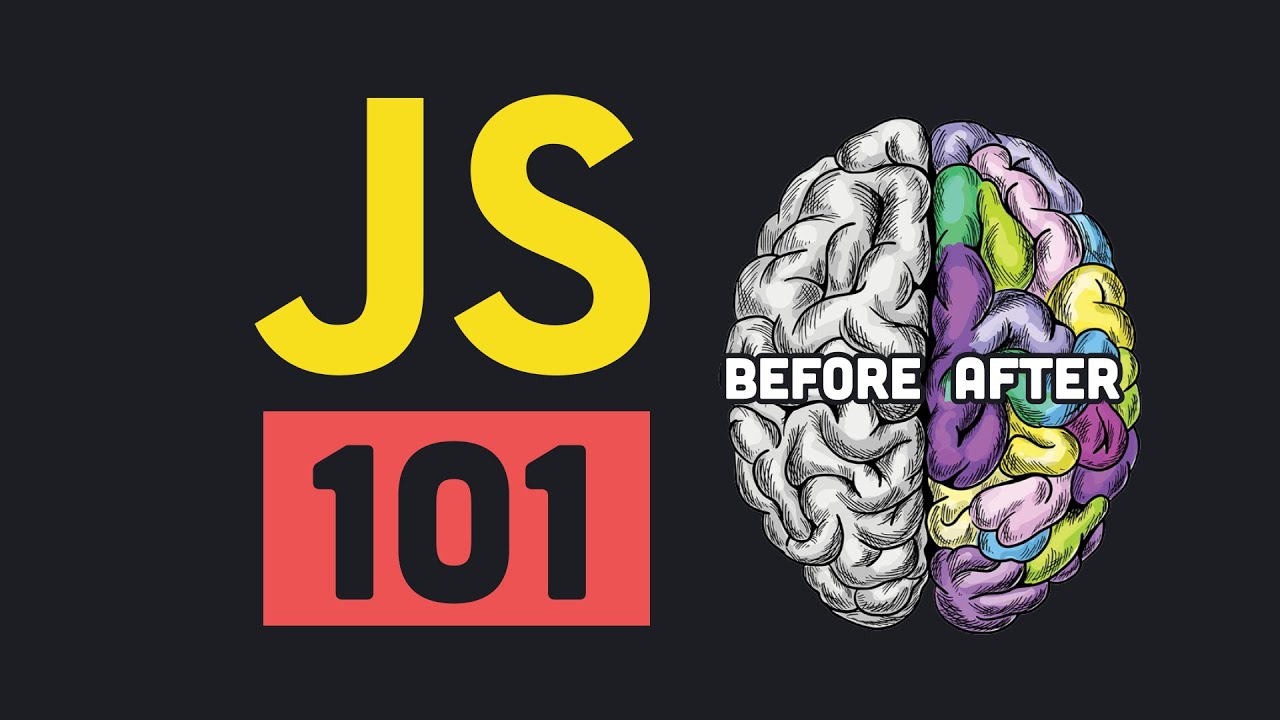Open-source software has rapidly gained popularity in recent years, revolutionizing the tech industry and disrupting traditional proprietary software models. While the concept of open source might sound complex and daunting, demystifying it can straightforwardly unlock a world of possibilities. This article aims to provide a comprehensive understanding of open source, its key principles, and why it matters in today’s digital landscape.
At its core, open source refers to software that is developed collaboratively by a community of programmers, making the source code freely available for anyone to view, modify, and distribute. Unlike proprietary software, which is often controlled by a single entity and restricted in terms of access and modification, open source champions transparency, decentralization, and inclusive collaboration. By diving into the key concepts and characteristics of open source, we will explore the advantages and challenges associated with this movement. Furthermore, we will shed light on how open source has transformed industries, fostered innovation, and empowered individuals and organizations to harness the power of technology in truly transformative ways.
1. Understanding the concept of open-source software
2. Key benefits and advantages of open-source software
3. Common misconceptions and myths debunked
4. Exploring popular open-source projects and their impact
5. Contributing to the open source community: How to get started
1. Understanding the concept of open-source software
1. Understanding the Concept of Open Source Software
Open-source software has become increasingly popular in recent years, with many organizations embracing it as a viable alternative to proprietary software. But what does open source mean? In this section, we will delve into the concept of open-source software, its characteristics, and its significance in the tech world.
At its core, open source refers to a type of software whose source code is freely available to anyone. Unlike proprietary software, which is controlled and developed by one particular company, open-source software is collaborative, allowing developers worldwide to contribute to its creation, improvement, and distribution. This collaborative approach enables a community of developers to work together, sharing their knowledge, expertise, and innovative ideas, to create high-quality software that benefits everyone.
One of the fundamental characteristics of open-source software is that it provides users with the freedom to run, modify, and distribute the software, as well as the right to access the program’s source code. This transparency allows users to understand how the software works, modify it to suit their specific needs and contribute to its continuous development. This open and inclusive approach fosters innovation, as it encourages developers to build upon existing software and share their improvements with the wider community.
Open-source software is typically licensed under an open-source license, such as the GNU General Public License (GPL) or the Apache License, which governs the sharing and modification of the software. These licenses ensure that the software remains open to everyone and prevent any single entity from claiming exclusive rights over it. This freedom to use and modify the software has significant implications in terms of cost, flexibility, and security.
One of the major advantages of open-source software is its cost-effectiveness. As the source code is freely available, users can acquire the software without paying exorbitant licensing fees. This makes open-source software an attractive option for businesses and organizations, particularly those on a tight budget or with limited resources. Moreover, the flexibility of open-source software allows users to customize and tailor the software to meet their specific requirements, reducing the need for expensive and time-consuming modifications.
Furthermore, the open-source community encourages a culture of collaboration, fostering the exchange of knowledge and expertise among developers. This collective effort results in a more robust and secure software ecosystem. The collaborative nature of open-source software means that bugs and vulnerabilities can be quickly identified and fixed, as a vast number of developers are constantly reviewing and scrutinizing the code. This increased transparency and the community’s collective commitment to security significantly lessen the risk of malicious intrusions or data breaches.
In conclusion, open-source software represents a fundamental shift in the way software is developed, distributed, and used. Its collaborative nature, transparency, and freedom provide users with a host of benefits, including cost savings, customization possibilities, and heightened security. As open-source software continues to gain recognition and momentum, individuals and organizations need to understand and embrace this concept, as it will undoubtedly play a significant role in shaping the future of technology.
2. Key benefits and advantages of open-source software
2. Key Benefits and Advantages of Open Source Software
Open-source software has gained immense popularity and is being embraced by individuals, businesses, and organizations worldwide. In this section, we will explore some of the key benefits and advantages that open-source software offers.
1. Cost-effectiveness: One of the primary advantages of open-source software is that it is available free of charge. Unlike proprietary software that can require hefty licensing fees, open-source software can be downloaded and used without any upfront costs. This not only saves money for individuals and businesses but also encourages innovation and fosters a collaborative community.
2. Customizability: Open source software provides users with the freedom to modify and customize the source code according to their specific needs. This flexibility allows businesses to tailor the software to their unique requirements, ensuring optimal performance and functionality. Additionally, individuals can modify the software to suit their personal preferences, providing a truly personalized computing experience.
3. Transparency and security: Open source software undergoes intense scrutiny from a global community of developers and experts. This peer review process enhances the security of the software, as any vulnerabilities or bugs are identified and fixed promptly. With access to the source code, users can detect and resolve security issues faster than with proprietary software, where such matters are often hidden from scrutiny.
4. Reliability and stability: Open-source software benefits from constant peer review and collaboration, leading to improved reliability and stability. With a large community of developers contributing to its development, bugs, and issues are quickly addressed, resulting in regular updates and patches. This collaborative effort ensures a more stable and dependable software experience for users.
5. Wide-ranging compatibility: Open-source software is designed to be compatible with multiple platforms and operating systems. Unlike proprietary software that often locks users into a specific ecosystem, open-source software offers flexibility and works seamlessly across different devices and environments. This compatibility allows businesses to integrate open-source solutions with their existing systems, reducing complexity and enhancing productivity.
6. Community support: Open source software thrives on a vibrant community of users and developers who collaborate, share ideas, and resolve issues together. This community support is invaluable, as users can access forums, discussion boards, and online resources to seek guidance and support. With a global community backing the software, users can benefit from collective expertise and shared knowledge, ensuring a smoother user experience.
7. Innovation and rapid development: Open-source software fosters innovation by encouraging users to experiment, modify, and contribute to its development. With a large pool of developers worldwide, new ideas and improvements are constantly introduced to the software, leading to rapid development and enhanced features. This collaborative nature of open-source software ensures that it stays relevant and can adapt to evolving user needs and technological advancements.
In conclusion, open-source software offers numerous benefits and advantages, making it a compelling choice for individuals, businesses, and organizations. From cost-effectiveness and customizability to transparency and innovation, the advantages of open-source software contribute to its growing popularity and widespread adoption. By leveraging the power of collaboration and community-driven development, open-source software continues to redefine the way we use and interact with technology.
3. Common misconceptions and myths debunked
3. Common Misconceptions and Myths Debunked
Open-source software has been making waves in the tech industry for several decades now, and yet many misconceptions and myths still surround this powerful concept. In this section, we aim to debunk some of the most common misunderstandings about open source and shed light on the reality behind the misconceptions.
1. Difficult to Use or Steeper Learning Curve: One prevalent myth about open-source software is that it’s difficult to use and requires advanced technical skills. However, this is far from the truth. Open source software, like any other software, can vary in terms of usability and complexity. Some open-source projects may indeed be designed for more skilled developers, but many others are built with usability in mind and have user-friendly interfaces. Many popular applications, such as the web browser Firefox or the content management system WordPress, are open source and are used by millions of non-technical individuals every day.
2. Less Secure: Another misconception is the belief that open-source software is less secure than proprietary software. The argument often goes that because anyone can access the source code, it’s easier for hackers to discover vulnerabilities. However, the open nature of the source code contributes to enhanced security. With many eyes scrutinizing the code, bugs, and vulnerabilities can be identified and addressed more quickly than in proprietary software, which relies on a limited number of developers. The communities surrounding popular open-source projects are generally vigilant in detecting and fixing security issues promptly.
3. Lack of Support: Some people mistakenly believe that open-source software lacks reliable support in comparison to proprietary alternatives backed by a dedicated customer support team. While it’s true that open-source projects may not have the same level of official technical support, there are numerous channels available to seek assistance. Most open-source projects have active communities, user forums, mailing lists, and documentation that provide valuable guidance. Additionally, many companies and individuals offer professional support services for open-source software, ensuring help is readily available.
4. Freeware and open source are the same: Although often used interchangeably, freeware and open source software are not the same. Freeware refers to software that is available for free, but it does not necessarily grant users the freedom to view, modify, or distribute its source code. Open source software, on the other hand, not only permits free usage but also ensures that users have access to the underlying source code and the freedom to modify and distribute it. The philosophy of openness and transparency distinguishes open source from mere freeware.
5. Lack of Innovation: It is a misconception to assume that open-source software lacks innovation because it is developed collaboratively. The open-source model fosters innovation by allowing a diverse range of contributors to work together. This collaboration leads to the sharing of ideas, rapid iterations, and the constant improvement of software. Many groundbreaking technologies, such as the Linux operating system and the Apache web server, are examples of successful open-source projects that have driven significant innovation in the tech industry.
By debunking these common misconceptions, we hope to provide a clearer understanding of open-source software. It is a powerful movement that encourages collaboration, security, and innovation while being accessible to all levels of technical expertise. Open source has revolutionized the way software is developed and has undoubtedly become a driving force in the modern technological landscape.
4. Exploring popular open-source projects and their impact
4. Exploring popular open-source projects and their impact
Open-source projects have revolutionized the way software is developed and used. The collaborative nature of such projects, where developers from around the world contribute their time and expertise, has resulted in the creation of numerous popular open-source projects. These projects have had a significant impact on technology, society, and even the economy. In this section, we will explore some of the most notable open-source projects and delve into their impact.
One of the most iconic open-source projects is the Linux operating system. Created by Linus Torvalds in 1991, Linux has become the backbone of countless systems worldwide. Its robustness, security, and flexibility make it a preferred choice for servers, smartphones, and even supercomputers. Its impact reaches beyond its technical superiority, as Linux has played a crucial role in enabling the growth of open-source software by providing a stable platform and inspiring other projects to adopt open-source principles.
In the realm of web development, the impact of open-source projects is evident in the popularity of WordPress. Initially introduced as a simple blogging platform in 2003, WordPress has evolved into a fully-fledged content management system (CMS), powering around 40% of all websites on the internet. Its ease of use, extensibility through plugins and themes, and active community support have made it a top choice for individuals and businesses seeking to create and manage their online presence.
Another influential open-source project is Mozilla Firefox, a web browser launched in 2004 as an alternative to Internet Explorer’s dominance. Firefox’s open-source nature allowed for rapid development and innovation, putting pressure on other browsers to keep up. Firefox introduced features like tabbed browsing, extensions, and improved security, enhancing the overall browsing experience. It has paved the way for greater competition and innovation in the browser market, benefiting users with a wider range of choices and better web standards support.
The emergence of Android, an open-source mobile operating system, has transformed the smartphone industry. Developed initially by Android Inc. and later acquired by Google, Android allows manufacturers to create devices with an ecosystem that provides users with access to a vast array of applications. The open-source nature of Android has unlocked innovation, leading to increased flexibility and customization possibilities for both developers and users. Android’s enormous popularity has made it the most widely used mobile operating system globally and has democratized access to technology in developing countries.
In the field of data analysis and machine learning, the open-source project TensorFlow has made significant contributions. Developed by Google, TensorFlow is a powerful library for numerical computation and machine learning applications. Its accessibility, scalability, and extensive community support have made it a go-to tool for researchers and developers working on diverse projects, from image recognition to natural language processing. TensorFlow’s open-source nature has accelerated advancements in AI and made it more accessible for organizations and individuals to leverage machine learning capabilities.
The examples mentioned here merely scratch the surface of the vast landscape of open-source software projects. They highlight the transformative power of collaboration and the positive impact these projects have on various aspects of the technology landscape, including operating systems, web development, mobile devices, and data analysis. Open-source projects have revolutionized the way technology is built, shared, and used, enabling communities to benefit from collective knowledge and drive innovation forward.
5. Contributing to the open source community: How to get started
5. Contributing to the Open Source Community: How to Get Started
The beauty of open source lies in its collaborative nature, where anyone can contribute, irrespective of their level of expertise or technical background. By contributing to open-source projects, individuals can not only enhance their skills and knowledge but also make a meaningful impact on the development of software that benefits users worldwide. However, getting started in the open-source community may feel overwhelming at first. This section will guide you through the steps to help you jumpstart your contributions and find the right projects to work on.
1. Identify your interests and expertise:
Before diving into the world of open source, take some time to reflect on your interests and skills. Identifying the technologies or programming languages you enjoy working with will help narrow down the projects you should contribute to. If you have expertise in a particular area, such as web development or machine learning, look for projects that align with your skills and experience.
2. Research Projects:
Once you have identified your interests and expertise, it’s time to dive into research. Explore popular open-source project hosting platforms like GitHub, GitLab, or Bitbucket, where you can find a myriad of projects across various domains. Browse through the repositories, read project descriptions, and understand their goals, objectives, and ongoing activities. It is essential to pick a project that resonates with your interests and aligns with your goals.
3. Start small:
As a beginner, it’s advisable to start with small, well-defined tasks within a project. These tasks, often labeled as “good first issues” or “low-hanging fruit,” are designed explicitly for newcomers to get familiar with the project’s codebase and development process. By picking an easily manageable task, you can gain confidence and build a rapport with the project’s maintainers.
4. Reach out and ask questions:
Open source is not a solo journey but rather a collaborative effort. Don’t hesitate to ask questions and seek help from the project’s community. Most open-source projects have communication channels like mailing lists, forums, Slack, or IRC where you can interact with experienced contributors and maintainers. Be polite and respectful in your interactions, and provide as much information as possible when asking questions.
5. Contribute Regularly and Consistently:
Contributing to open source is not a one-time activity but rather an ongoing commitment. Try to contribute consistently over time to establish yourself within the project’s community. This can be achieved by working on multiple tasks, bug fixes, documentation improvements, or adding new features. Consistent efforts not only provide valuable contributions to the project but also enhance your skills and understanding of the codebase.
6. Collaborate with others:
Open source is all about collaboration, so embrace it fully. Engage with other contributors, provide constructive feedback, review code submissions by others, and offer suggestions for improvement. Collaborating with the community not only strengthens your relationship within the project but also widens your network and enhances your technical knowledge.
7. Contribute Beyond Code:
Open-source projects thrive on more than just code contributions. You can contribute in various non-technical ways as well, such as improving documentation, translating project documentation or user interfaces into different languages, designing logos or user interfaces, or providing user support on forums. These contributions are equally valuable and contribute to the overall success of the project.
In summary, contributing to the open-source community is a rewarding experience that allows you to learn, grow, and impact the software industry. By identifying your interests
In conclusion, open source has rapidly expanded its influence in the world of technology, revolutionizing the way software is developed and distributed. This article has aimed to demystify the concept of open source by providing a comprehensive overview of its key features, its benefits, and its potential limitations. We have discussed the collaborative nature of open-source communities, the transparency and freedom associated with their licensing, and the wide range of applications they encompass. Furthermore, we have analyzed its growing significance for both individuals and businesses, highlighting the economic advantages and the increased innovation opportunities it brings. While open source continues to present challenges related to security, governance, and sustainability, it remains a powerful force driving progress throughout various industries. By understanding the fundamentals and embracing the principles of open source, individuals and organizations can fully utilize its advantages and contribute to the ever-evolving landscape of technology.



















Good explanation. Sadly ironic given IBM's attempt to bring Rhel back into proprietary control.
that sounds great, how does one begin to go about finding bugs? I have used beta software in the past and those typically have ways to report bugs that are found. is this what you would recommend or are there other methods of bug hunting?
Patent law covers computer software, not copy right. You do not copy write a wheel. Machine code. Machine.
Patent law provides for free or low cost technology, they expire or owners can charge little or nothing.
Creating open source however, has relied on copy right law, which is a no no. It has violated copy right law, which provides unconditional transformative copy writes, a power Congress reserved, to create more, not free intellectual property.
So then open source is one of two things, patentable, or not. If not, it is free anyway. If it is patentable, but you do not patent it, that is called patent abandonment of your 'discovery'.
We can also go to the most basic levels of patent law and say a cpu unit and hardware are so general purpose, that software can not be patentable since there is no other way to run the machine, but by eventually duplicating the code of others, even if working independently.
I have no way of knowing that can or will happen. The results of ignoring these concepts has damaged economies, as software not being run through a patent office, has cost people time and money trying to run machines with broken drivers, software and bugs.
AI? AI now stands for Automated Intellectual property theft? Where are the foot notes depicting source data? You know, like when you did a paper in college, you have to provide source material?
This is exactly why I loudly complained when Google began scraping web pages, instead of just exposing robot page data or customer provided copy.
So why should I or you create content, knowing hundreds or thousands will just index it and add it to their portfolio?
This is why Word Press became so popular? You could easily scrape content of another site, apply a new theme, and voila, Jersey Boy on Social Security has a blog on Yoga, a real expert?
And you felt like crap trying to fix his plugin he spent some money on, hoping to make a couple hundred extra bucks to supplement his income, and knowing he had no prayer running with a group faster at creating new content then he could?
Lets not talk about the lady who figured out how to feel good with yoga, she was stupid enough to share? Horrors. I don't know how these people sleep at night.
That part of the industry makes the rest of you look bad?
Really good video. Thank you
Stellar explanation!
Thats really good! Thanks for your explanation!
Great explanation on OSS ecosystem!
Loved the explanation!
Excellent explanation. I love open source.
But how to earn money 💰💵 from free software?
Thanks for the video, this was great content on OPEN source 👌
I ❤️ OPEN SOURCE! Nicely explained. Thanks for sharing.
Not one single mention of Stallman.
Shame IBM… Shame…